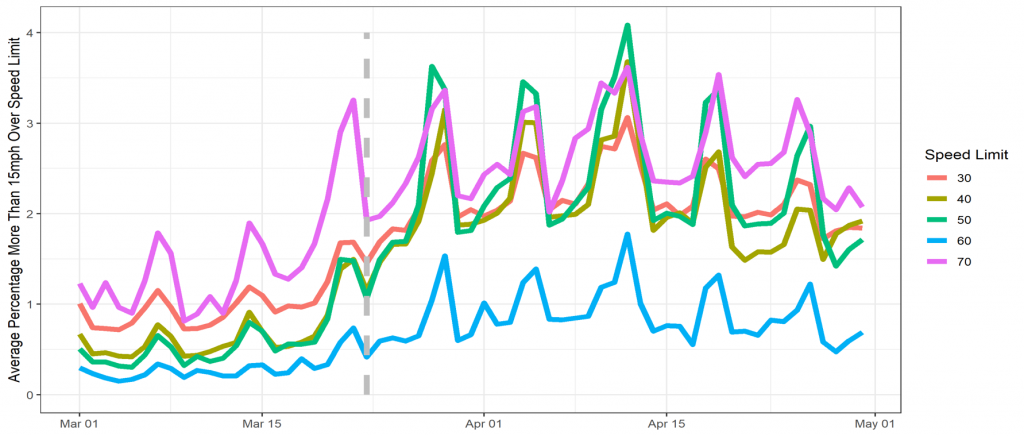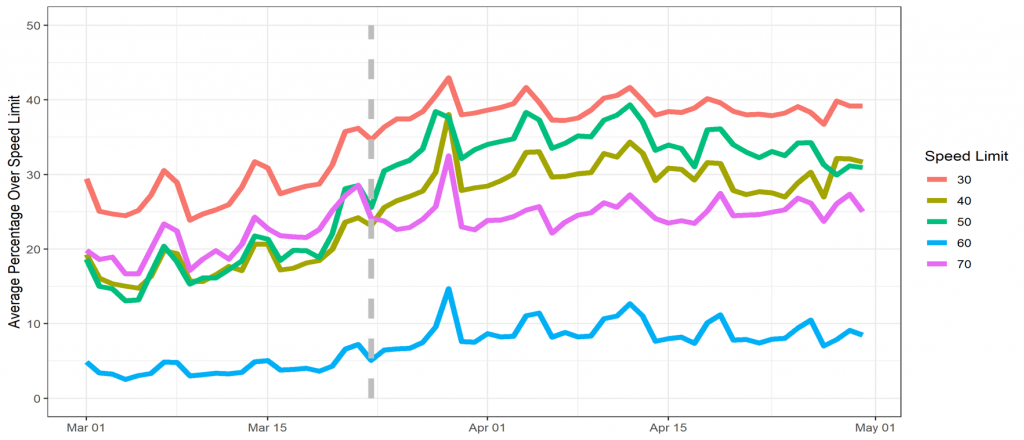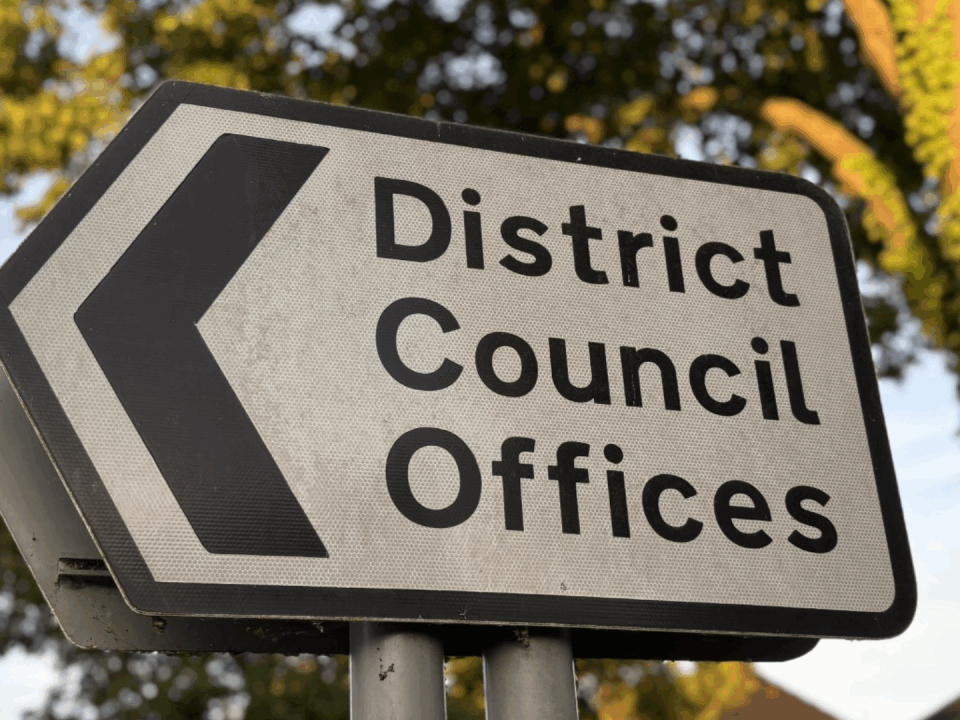Analysing the Impact of the COVID-19 Lockdown on Vehicle Flow and Speeds in the UK
A new research paper analysing the effect on traffic speeds during lockdown has revealed startling difference in speeds on roads when the volume of traffic falls. Clear changes were seen on all roads, but the increase in speeds on rural roads was more marked. Meanwhile, the number of drivers travelling 15mph above the limit also increased more on countryside roads than it did in our towns and cities. These results demonstrate the vital importance of speed enforcement, especially at times when more people are walking and cycling. Evidence from recorded casualty data in Essex indicates that collisions involving speeding drivers have increased significantly during lockdown. Targeting high-end offenders is recommended to ensure our roads are safe for everyone, during national or local lockdowns and beyond.

The report demonstrates that traffic flows in the post-lockdown period reduced by between 58 and 64 percent, with the biggest declines recorded on roads with speed limits above 50mph. When transformed for flow, a drop of 10,000 vehicle per day on a single stretch of 60 mph road was matched by an increased average speed of 2.2 mph. This was only 0.9 mph in 30 mph limits. High-end speeding was much more of a problem on 60 mph roads too, with vast increases in the proportion of drivers travelling more than 15mph above the limit. This effect was less pronounced on the rest of the road network including motorways and urban, low-speed roads.
The study was undertaken by Agilysis, following initial research into the effects of reduced traffic volumes on speeds on a small number of roads. The research project brings together data from several local authorities in rural and urban settings and looks at how traffic levels changed post-lockdown, and the impact on drivers’ speed choice.
Evidence from the Safer Essex Roads Partnership (SERP) indicates that while the large drop in traffic has resulted in fewer collisions overall, the higher speeds have meant that injuries suffered by those who did have collisions were more serious. There was a 54% drop in the number of slight-injury collisions but only a 43% drop in collisions that resulted in death or serious injury. There was also a 35% increase in the proportion of collisions where inappropriate speed was recorded as a contributing factor.
The SERP has also noted an increase in the number of people cycling in Essex, and consequently there has been a small increase in the number of cyclist casualties at a time when total casualty numbers were falling. In the event of a collision with another vehicle, cyclists are more likely than car occupants to suffer a serious or fatal injury. This has also contributed to the increase in the average severity of recorded injuries.






